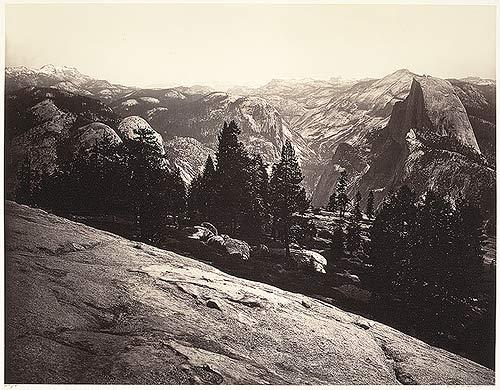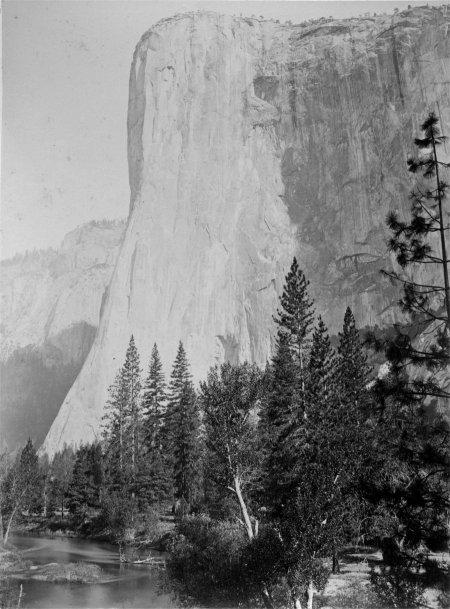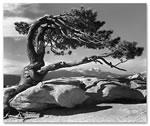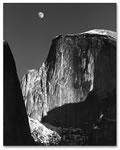Photography is one of the youngest but at the same time most fascinating forms of art ever invented by the human mind. In the development of the art of photography numerous technical, biological and chemical inventions participated equally with the inventions of photo cameras, lenses, optical devices, and many other phenomena.
Traditionally, the birth of photography is considered to have happened in the early 19th century when first photographers used polished plates made of pewter and covered with small amounts of petroleum, some silver-based elements or chalk compounds that interacted either with the air or the sun and produced the projections of the image photographed on the intended plate or paper (Rosenblum, 2008).
However, the development of photography was rather fast and already by the end of the 19th century brilliant masterpieces appeared, which were followed by not less perfect pieces of work by 20th century artists. The focus of this paper is the comparison of works of two famous American photographers who dedicated their lives to picturing the Yosemite National Park –Carleton E. Watkins and Ansel Adams.
Carleton E. Watkins
Background
Carleton Emmons Watkins (1892 – 1916) was the first widely known photographer who earned his living by working commercially and fulfilling the orders of various companies that demanded advertising and wanted to use photography as a means of it. His whole life was spent between the two places in California – San Francisco where he lived and worked and Yosemite National Park where the majority of masterpieces by Watkins were created.
His work in the National Park took him twenty years of his life and resulted in the brilliant collections of photos that were published in such books and monographs as “The Yosemite Book” (1869), “Photographs of American Scenery” and some others. The beauty of nature that inspired the photographer for his works served as the reminder for the society that National Parks should be defended and taken care of. This fact led to the appearance of the so called Conservation Movement that fought for protection of national nature resources of the United States (Longmire, 1997).
Moreover, numerous artists found their inspiration in the works by Carleton Watkins; among them Ansel Adams was one of the most prominent artists: “Carleton Watkins, whose pictures of Yosemite became popular in the 1860s, was as ambivalent about land development as Adams was 70 years later, though neither ceased working for the industrialists who were their regular employers.” Thus, it is necessary to present and analyze some of Watkins’ works dedicated to Yosemite National Park in order to further compare them to Ansel Adams’ works.
Analysis
To begin with, it is necessary to mention that almost all the major works by Carleton E. Watkins were carried out using the one and the same method. By the time the Yosemite series was started, Carleton Watkins was a famous master of the so called wet-collodion technique that made use of the “mammoth” plates made of glass to allow for the better and wider representation of landscapes (Rosenblum, 2008).
One of his brilliant masterpieces called “View from the Sentinel Dome” (1866) was carried out specifically by means of the above discussed technique. This photo presents a piece of the first Yosemite series produced by Watkins in the period of 1865-1866, and displays the features of the real master of photography – clear representation of the smallest details of the landscape, panoramic character of the subject portrayed, etc.

Moreover, the use of the monochrome technique allowed the author of the photo to render the emotions of the landscape he portrayed. In other words, the playing of light and shadow on the hills, mountains and forests seen from the top of the Sentinel Dome in Yosemite National Park is much clearer than the polychrome, or color, photography could provide for (Flagan, 2002).
Looking at the photo under consideration one can not help but observe the flight of clouds over the trees and picks of mountains. The state of weather at the day the photograph was taken is also clear from it, and it all creates an impression of live presence of every viewer of the photo at the setting in Yosemite.

Another work by Carleton E. Watkins to be analyzed in this paper is called “El Capitan” (see above) and it belongs to the second series of Watkins’ work taken in 1870s (Longmire, 1997). The second series of photos was characterized by greater awareness of natural phenomena and necessity of their protection.
From the above presented example “difference between Watkins’ first Yosemite series and the second, the beginnings of an environmental conscience can be seen,” The author portrays one of the highest cliffs in the Yosemite National Park with admiration and fearful respect. The techniques used by Watkins are the same with the use of glass plates and wet-collodion method (Longmire, 1997). As a picture of natural vastness, this photo has no analogues in the history of photography, and only works by Ansel Adams deserve the same appraisal but in somewhat different aspect.
Ansel Adams
Background
Thus, Ansel Adams (1902 – 1984) can be called the most successful follower of the tradition and standard established by Carleton E. Watkins in photography on natural topics. This American genius of art was born several years before his so-called teacher and inspirer Carleton Watkins passed away, but his fame was carried on by Adams. Growing up as a child with few friends, Ansel Adams first had interest in music but having once arrived to the Yosemite National Park, he changed his views irreversibly. The main task of his whole life became the defense of the National Park and its portraying for the memories of the coming generations (Flagan, 2002).
On the whole, there is much in common between the works and working techniques by Carleton E. Watkins and Ansel Adams. They both spent the major parts of their lives traveling from San Francisco to Yosemite and vice versa. Their love for nature and beauty was immense and their works constitute nowadays the collection of world’s photography masterpieces.
Moreover, the use of monochrome photography is another similar feature of the works by Watkins and Adams (Flagan, 2002). Both photographers understood that only the black and white images could render the very essence of natural beauty and emotions the authors felt while taking their pictures. That is why, although full color photography had already been invented, Ansel Adams kept to the tradition of the monochrome portrayal of Yosemite.
Analysis
To demonstrate the comparative similarity of the works created by Ansel Adams to what Carleton E. Watkins managed to produce during his lifetime, the following analysis is presented. First of all, however, it is necessary to state that Adams’ photographs were taken in the early 1950s – 1960s, and the technical equipment allowed him to be more flexible choosing the subjects for pictures and the techniques of their production, including “Adams’ pre-visualization and processing of ten tonal digits to invoke the touch of his inner vision”.
One of the mentioned technical means was created by Adams himself and called “Zone System”: “Anchored in the principles of densitometry (used here in relation to the optical density of photographic negatives and usually referred to in earlier literature as sensitometry), the Zone System is a method that allows the photographer to coordinate exposure readings with exposure and development controls based on a pre-visualization of the final photographic print.”

Other advantages Ansel Adams had at his disposal were the modern photo cameras with optical lenses, mirrors and shutters that minimized the risk of a damage to the shots taken and further photos produced out of them (Flagan, 2002). The realistic character of images produced was than difficult to understand for the author himself because “Many consider my photographs to be in the ‘realistic’ category. Actually, what reality they have is in their optical-image accuracy; their values are definitely ‘departures from reality.” (Flagan, 10). Thus, here is one of the masterpieces by Adams.

This photo is titled “Moon and Half Dome” and it was taken by Ansel Adams on December 28, 1960 with the use of such modern photographic technological means as the Hasselblad camera with a Zeiss Sonnar lens installed in it capable of performing with the width of 250mm. The peculiarity of the photos made by Ansel Adams was also his technique of releasing the mirror of his camera before the shutter of it came into performance which provided for little vibration of the camera in the photographers hands and produced an image of great clarity and detailed precision (Flagan, 2002).
As compared to the works by Carleton E. Watkins, the photos by Ansel Adams are obvious to produce the impression of ones taken with the highest quality. It is not surprising, as the period of time that passed between the activities of the two photographers amounts to almost a century. It is clear that the image of the moon, for example, is a high precision photo displaying the smallest details of the landscape, but this fact does not reduce the value and significance of Watkins’ works for the world’s photography. On the whole, Watkinson and Adams are geniuses of photography and their works contributed greatly to the development of the Yosemite National Park.
Yosemite
Background
To begin with, Yosemite National Park was discovered in 1851 as a valley of unbelievable natural beauty by the members of the Mariposa Battalion during their wars with American Indians: “When one young man, Lafayette Houghton Bunnell (1824-1903), suggests the name “yosemite”, he has no idea what the word means, only that it is often used to describe the local Indians. After the name has been adopted, Major James Savage, who understood and spoke several native languages, translates “yosemite” as “a full-grown grizzly bear”.
Since then, numerous debates were taken to define the real origin of the Park’s name, but scholars have not yet managed to come to an agreement. In any case, the Yosemite National Park has already become the place where Americans can feel the immensity of their country and patriotism for their motherland (Fragnoli, 2004). This is often explained by the fact that “when translated as “grizzly bear,” it conveys a sense of wildness and suggests that this animal was the valley’s charismatic mega fauna. Filled with “romantic visions of primordial North America,” Americans can enjoy Grizzly Bear National Park secure in the belief that it constitutes “remnants of a priori Nature”.
Influence by Watkins and Adams
The influence on the development of the National Park of Yosemite made by works of Watkins and Adams can not be denied. These were to a large extent the photos by Watkins that attracted thousands of tourists and scholars to Yosemite and made the US Government establish the official National Park on the territory of the Valley in 1890. The next positive step for the development of the infrastructure of the future National Park was the establishment of the state management in its bodies and institutions like the National Park Service in 1916.
Further on, with the development of the Park structure, the need of accommodations, water supply and sanitation systems for the larger and larger amounts of tourists emerged in Yosemite. Despite the fact that “the idea of hiding human infrastructure in a natural or wilderness setting developed more than a century before Yosemite’s establishment as a state park in 1864”, works by Watkins and Adams attracted numerous visitors to the park and made the task of the Park Administration even harder but at the same time more pleasant. They had to cope with flows of tourists but this meant the fast and positive development of the Park, as well as rise of attention towards the issue of natural protection.
For example, Watkins was an active member of the Conservation movement that fought against air and water pollution and free access of visitors to Yosemite. Ansel Adams in his turn was the activist of the Conservation movement and then developed into initiative leader of the Sierra Club and the John Muir Trail which later published books illustrated by Adams’ photos of Yosemite beauties. This, among other outcomes, resulted in Roosevelt’s decision to establish the King’s Canyon National Park that embraced territories of Sierra, Yosemite and other parks.
Thus, it is obvious that Yosemite National Park benefited greatly from the artistic work that Carleton E. Watkins and Ansel Adams carried out on its territory. Their photos contributed to both the popularity of Yosemite among the American citizens and to the greater attention from the side of the Government paid to the issues of Yosemite development and protection.
Conclusions
Accordingly, to make a conclusion to this research paper it is first of all necessary to state that Yosemite National Park is integrally connected in its development to the history of photography. Such geniuses of this art as Carleton E. Watkins and Ansel Adams lived and created their masterpieces on the territory of this park and made great impacts for the future development of this natural phenomenon. Photos by both these artists are skillful works displaying clarity of image, emotional coloring of the subject portrayed and the beauty of nature that demands protection and care. They differ in technical means of their production but are similar in their highest quality and effect upon the development of photography in the world.
Works Cited
Colten, Craig E., and Lary M. Dilsaver. “The Hidden Landscape of Yosemite National Park.” Journal of Cultural Geography 22.2 (2005): 27+.
Flagan, Are. “Layers: Looking at Photography and Photoshop.” Afterimage 30.1 (2002): 10+.
Fragnoli, Delaine. “Naming Yosemite.” ATQ (The American Transcendental Quarterly) 18.4 (2004): 263+.
Longmire, Stephen. “Back West: Reviewing American Landscape Photography.” Afterimage 25.2 (1997): 21+.
Rosenblum, Naomi. A World History of Photography. Abbeville Press; 4 edition, 2008.